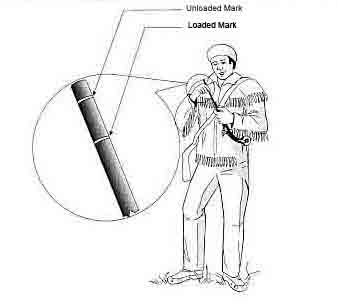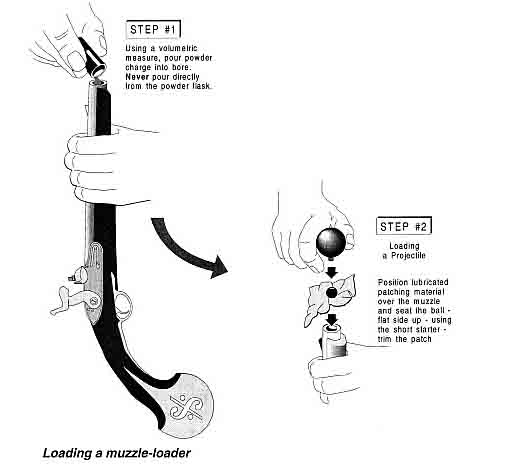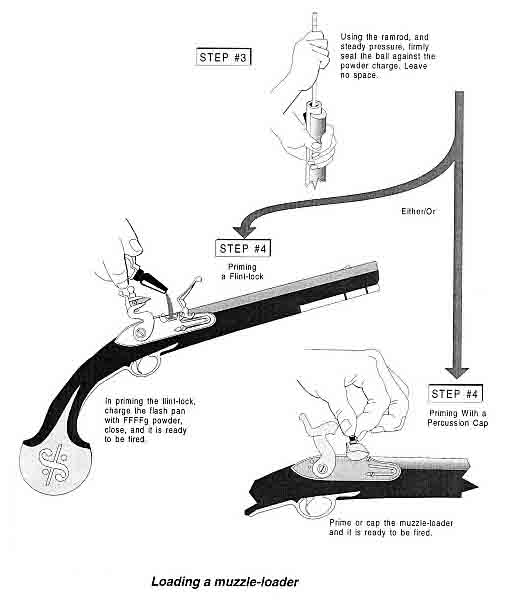Welcome to the world of yesteryear!!
Here is a little information regarding these firearms and their use. Please note that this DOES NOT contain precise information and we urge you to come and see us and attend one of our clinics where experts will not only explain, inform and advise you of the different systems, calibres, loads and options available, but answer your many questions.
This type of firearm is loaded through the muzzle. A measured amount of powder is poured through the muzzle into the barrel, followed by a patch or wad, and finally a lead ball, bullet or shot. A hole located at the barrel just above the trigger allows a flash or spark to enter the barrel through the priming port called a flash hole and ignite the powder, firing the main charge.
With flintlock ignition muzzle loaders, the igniting spark is the result of the cock, which contains the flint, hitting the frizzen. On percussion ignition muzzle loaders, the flash is produced by the hammer striking a percussion cap.
Muzzle loading firearms use black powder or black powder substitutes. Black powder is classified as an explosive (and is controlled by the Explosives Act) and is easily ignited by heat, friction, a hard blow, or even static electricity. It must be handled with extreme care. Once again, It is strongly recommended that individuals interested in muzzle loading seek additional training from qualified specialists in the field.
|
Older firearms should be inspected by a qualified gunsmith to be sure they can be fired safely |
Today, most firearms for black powder use are reproductions of muzzle loaders. Older firearms may not be safe to fire and should be thoroughly checked by a qualified gunsmith before use.
If a muzzle loader is not primed to fire, it is safer to handle. To ensure that a muzzle loader is not primed to fire:
- point the muzzle in the safest available direction and keep your finger off the trigger and out of the trigger guard;
- check that the hammer is not in the full cock position;
- check for a percussion cap or see if the priming or flash pan is primed; and
- if the firearm is primed, remove the cap or priming powder.
In addition, it is difficult to tell if there is already a charge loaded into the barrel of a muzzle loader. Experienced shooters mark the firearm's ramrod at a level which shows the bore depth when the bore is unloaded. When the marked ramrod is inserted in the barrel, it shows whether or not the firearm is loaded.
Marking the ramrod

|
It is very important that the exact loading and unloading procedures are followed when handling muzzle loaders. Before attempting this, get the assistance of a qualified individual and carefully follow the instructions in your owner's guide. |
In black powder revolvers, a measured amount of powder is poured into each chamber. A ball is firmly seated on each charge. Grease or lubricant is placed on top of each ball to lubricate its travel down the barrel and at the same time prevent "chain-firing" of all the chambers. A percussion cap is put on the nipple of each chamber which when struck by the hammer produces the flash.
Loading a single chambered muzzle loading pistol


(with acknowledgement to the Department of Justice Canada)
